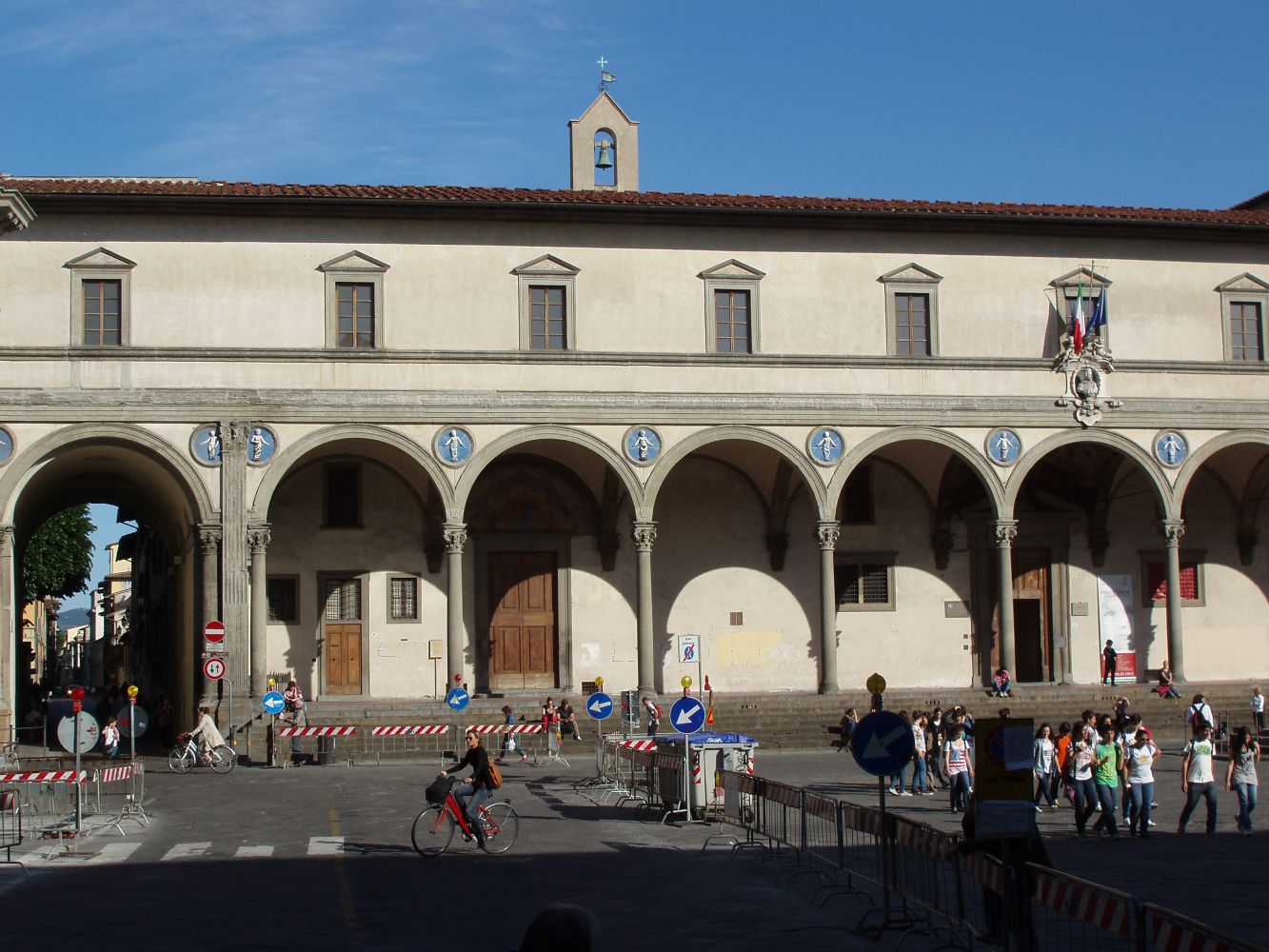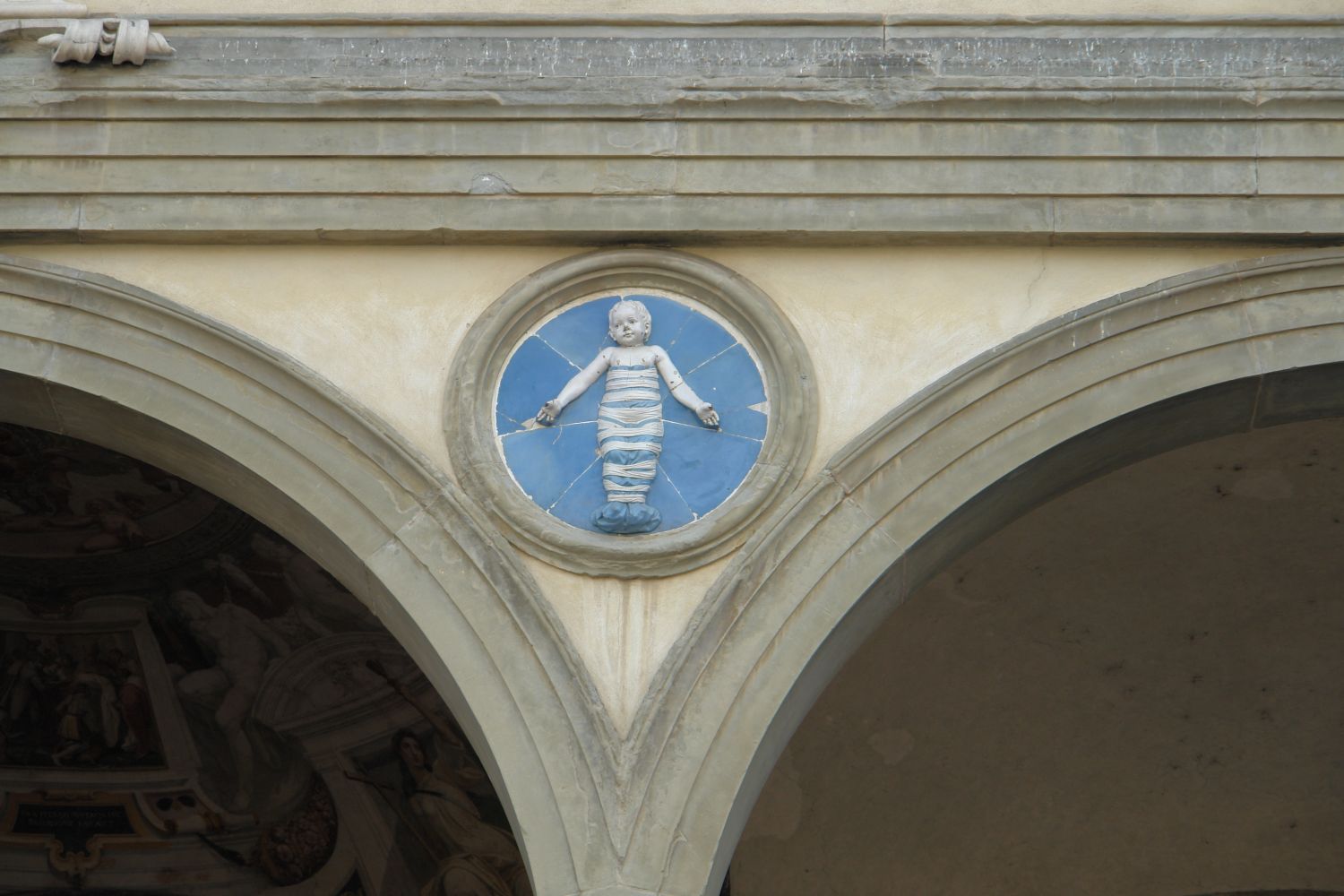



This artistic movement was expressed in many ways. One of them, of course, the architecture with examples as grandiose as the Cathedral of Florence, in the Piazza del Duomo. However, it is the Hospital of the Innocents which is considered the first architectural work of Renaissance style. Curiously, the Hospital of the Innocents was also Brunelleschi’s first architectural work. But, speaking of one of the greatest artists in history, the result was nothing but total success.
This was the renowned Hospital of the Innocents, as its name shows, was an orphanage of children in this city of Italy. Located opposite the Piazza della Santissima Annunziata, it was built and run by the «Arte della Seta» or Guild of Silk of Florence.
This building was built on an orchard located next to the Church of the Santissima Annunziata, was created as part of a comprehensive program of power centers to improve the lives of citizens, bringing better health and social care.
Raised on the same level of the square by a set of steps that run along the entire extension of the facade. Since the gallery was started before the hospital began, the hospital was not formally opened until 1445.
For the design, Brunelleschi relied on the architecture of ancient Rome as on late Gothic architecture. The use of round columns with classical correcting capitals, as well as circular arches and spherical domes behind them. The architectural elements were articulated in grey stone that stands out against the white of the walls.
On the left side of the porch is the broken, stone lathe to make the child enter the building without seeing the father. This allowed people to leave their children anonymously, to be cared for in the orphanage. This system continued to operate until the closure of the hospital in 1875. Today the building houses a small museum of Renaissance art.
Originally, abandoned children were collected at the Hospital of the Innocents. The building was designed by Brunelleschi in relation to the space of Piazza Santa Annunziata. This architect directed the works from 1419 to 1427, when they were taken over by Francesco della Luna, to whom the second floor of the façade has been attributed. The portico, based on arches, reflects the system of proportions on which the Brunelleschian architecture is based, because the width of the span and the portico is equal to the height of the columns, with which what we find is a cube that is repeated nine times.
The predominance of horizontals and the rationalism that is at the base of its design, have led Antal to affirm that this hospital is the most modern bourgeois realization of Florentine architecture. Among the arches we find medallions executed by Andrea della Robbia representing children wrapped in diapers, alluding to the fate of the building. Inside, the hospital is organized around a courtyard with arcades. It is currently the site of the Galleria dello Spedale degli Innocenti, a museum featuring works by Ghirlandaio, Botticelli, Andrea del Sarto, the Della Robbia and Italian painting from the 18th century.
The Basilica of the Most Holy Annunziata (Santissima Annunziata) is one of the most beautiful and important churches in Florence. It was built by Michelozzo, one of the best architects of the Renaissance. Its interior is one of the most outstanding in the whole city. However, the most special thing about the Basilica of the Blessed Annunciation is a painting that, according to legend, was made by an angel.
With incredible interior design and decoration, Michelozzo and later Alberti created one of the most beautiful churches in the city. But it was two centuries earlier, in the XIII, when the legend arose and his most famous painting was painted. A monk from the old church was commissioned to paint an image of the Annunciation of the Virgin Mary. According to his testimony, impotent and dissatisfied with how his work was going, he believed he was not capable of making a painting to the height. While working on it and with this feeling, he took a nap in front of his half-done work to look for inspiration. When he awoke, he saw the hand of an angel who was finishing off the painting, which had now become perfect.
The legend spread like wildfire throughout the city and soon the Basilica of the Holy Annunciation (which owes its name to another previous apparition of the Virgin in this place) gained enormous popularity. It thus became one of the most frequented in Florence.
Here the link of the tour: https://www.madeoftuscany.it/the-hospital-of-the-innocents/
